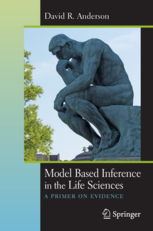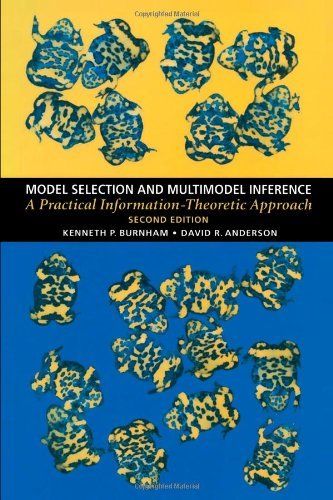Summary and reflection
A brief review of this module
In this module, we’ve covered:
- How to get your line transect observations into R, and prepare them for distance analysis using unmarked
- Running a basic model using the half-normal detection function
- Extracting density and detection probability
- Deciding on a truncation distance to remove distant sightings
- The foundations of Information Theory
- Comparing models with Delta AIC
In the next module, we’ll build a set of candidate models, each representing a particular ecological hypothesis. We’ll evaluate the candidate set and compare models to decide which hypothesis has the greatest amount of support from our data
🤔 Reflection: Minute questions

Take one minute to reflect on and answer the following questions
Further resources
We recommend this introductory text to support your learning about the Information Theoretic approach:
Anderson DR (2008) Model-based inference in the life sciences: A primer on evidence. Springer, New York, USA

This more advanced book goes into more detail in the theory and applications:
Burnham KP & Anderson DR (2002) Model selection and multimodel inference: A practical information-theoretic approach. 2nd Edition. Springer-Verlag, New York
